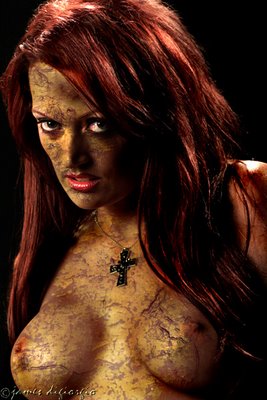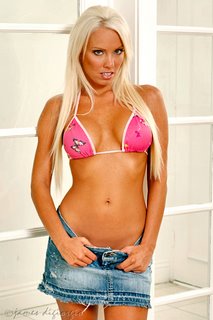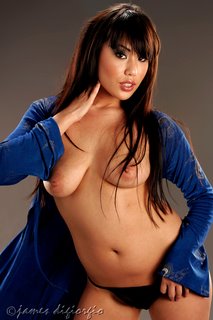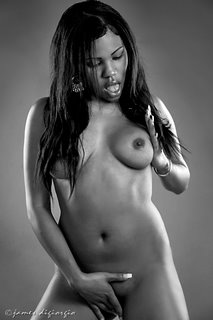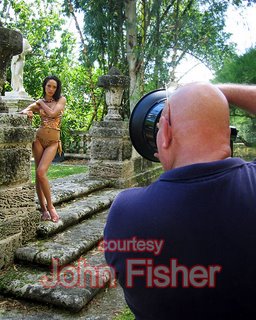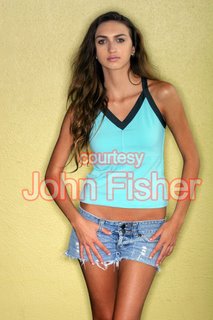
I drove down to Huntington Beach today for a production meeting. Looks like I'll be directing a pilot for an independently-produced reality-show in Las Vegas next month. (Assuming everything goes according to plan.) I'll also be the DP (Director of Photography) plus shooting one of the video cameras as well as some glamour stills.
Yes, I'm aware I'm possibly biting off more than I can chew but I'm a hearty eater. No, the money's not all that great but I'm not greedy. Yes, it should be fun and, probably like many of you, fun is something I'm quite partial to. (The gig includes beautiful women, residing for a week in a 7,000 sq. ft. mini-mansion not far from "The Strip," and did I mention the beautiful women?) BTW, I should add this-- No, I can't tell you what the show will be about because they had me sign a non-disclosure agreement. ("The first thing we do, let's kill all the lawyers." --Shakespeare)
If you're at all familiar with the traffic on California's 405 Freeway, you might know what it's like driving from the San Fernando Valley down to Huntington Beach and back: Freakin' brutal!!!
When I returned home, I needed something to stimulate my brain. My ass was numb from sitting in traffic for more than two hours on the return trip and my brain was even number from... well, from sitting in traffic for more than two hours.
I logged onto the
Glamour1 forum and the first thing I noticed was a post by a back-East shooter (Stamford, Connecticut) whom I've developed a cyber-friendship with. (Based mostly, at this point, on a photographic, cinematic, and artistic kinship.) Hopefully, sometime in the future, we'll meet and our somewhat similar backgrounds, skill-sets, and creativity-connections will evolve into an actual and real-life friendship.
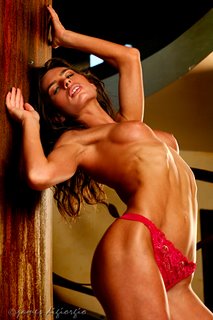
His name is Matthew Cherry and he has a website,
Paramour Productions, which I recommend you visit. There's a very cool, behind-the-scenes, video from one of Matthew's glamour shoots on the site that I think many of you will enjoy viewing. Matthew's site is still undergoing some construction and further development but there's enough there to give you an idea of what Matthew is about.
Reading the following, however, will give you an even better idea of what Matthew is about. So sit back -- it's a bit of a long read by blogging standards -- be warned that your ass, like mine when I returned home this afternoon, might also become a little numb by the time you're done reading. After reading, however, I can almost guarantee your brain won't be... numb that is.
Here's what Matthew wrote for his
Glamour Manifesto:
"There is more to life than seeing breasts, isn’t there?
I’m sure I didn’t always feel this way. I remember the delight I once felt as a kid upon finding my older cousin’s stack of playboys. It was a long time ago, but I’m pretty sure that at the time, seeing breasts was an all-encompassing obsession. Truth be told, I still enjoy seeing them, it’s just not quite the sole focus of my existence anymore, but yes, indeed, the site of a beautiful woman sans clothing, staring back at me from another time still makes me feel good. It is no longer arousing to me as it was in my youth, but it makes me smile. It makes me happy, I think, because it reminds me of those summer days, outside with my friends, huddled around an old worn-out copy of Playboy and looking at it with shear wonder and amazement. I didn’t really understand what I was seeing, and yet I did. It had an impact.

There may be some reading this who are quite a bit younger than I am, and may not fully appreciate what that impact was. See this occurred before the days of the “Lad Mags”. There was no Maxim or FHM or Stuff or any of the other over the counter gadget/tease magazines that are out today. This was the late 70’s and our country had been going through, and coming out of, some pretty ugly times. This ugliness seemed to permeate every aspect of my society, from fashion to attitudes. Even that which was held out at “fashionable” or “beautiful” had a darker edge. I’m sure that adults understood this and that it worked as a metaphor for the times, but seeing some hard-lined model who looked as if she just came off a coke-fueled night of partying, with an expression that said, “go screw yourself”, didn’t do anything for a twelve year old kid who had been raised on a $1.50 matinee diet of old Cary Grant and Ingrid Bergman movies. Glamour had left Hollywood, it had left television, it had left fashion and it certainly wasn’t at the newsstand, at least nowhere I was allowed to look. It seemed that the whole world was covered with a thin film of sludge made up of equal parts fear, depression, despair, loathing and self-absorption. If you watch many films from that time you will see they tend to have a sort of grey desaturated look to them. I know that much of that has just come from time, but to me, that was how the world actually looked.
While there may not have been any lad mags, there were men’s magazines. At the time these fell into two categories, Playboy and pretty much everything else, and most of that “everything else” was pretty awful (Penthouse probably being the one exception depending on what issue from what year you looked at as it’s imagery tended to vacillate quite a bit between harder and softer fare). While the harder magazines (the everything else bunch) may have showed everything that two people could possible do, and as such were educational resource to be sure, they were far from glamorous, or even beautiful. They were the women of the real world, covered in that same sludge of despair which they tried to mask with too much makeup and a softening filter. We looked at these women much as we would look at a sideshow freak at a circus, awkwardly interesting to look at, but only from a distance, and not too often.
Then there was Playboy and in it’s pages, were real girls. Beautiful girls. Smiling, happy, vivacious girls with angelic faces. These were just like the pretty, older, neighborhood girls that walked by on our Chicago streets. Old enough for us to stare at from our front stoop, and yet still young enough to not have been hardened by the bleak, grey world around them – and they were naked! They didn’t look “dirty” or like the old washed up whores that we sometimes saw walking home early in the morning. They didn’t look like the women in those other magazines, these girls were soft and pretty and beautiful and, well, glamorous…
I think a lot of us who shoot glamour today were inspired by those images. While our concept of “glamour” may have evolved to include different types of images, both past and future, those images from our youth continue to serve as a cornerstone of what glamour means.
The heyday of glamour began prior to the first issue of playboy though. Most of us feel it’s golden age came along with the golden age of Hollywood, a time when studios carefully crafted the image of each of their actors. America had been going through some hard times then as well. We had just been through one Great War and we were getting ready for another. The depression had taken much of the nation’s pride and FDR was trying to instill hope with a New Deal, while Mother Nature transformed the great plains into a bowl of dust. Movies were not just another option for something to do on a Saturday night, they were an escape from the hardships that many faced, and Hollywood delivered. They gave us stars that were larger than life, beautiful and provocative, strong and dashing, and as sensual and erotic as the times would allow. They were glamorous.
When our young men went overseas to fight yet another world war, they took these images with them. Pinned up in lockers, tucked away in flak jackets and painted on planes, these were the images that inspired a generation of fighting men to endure the hell that had erupted around them. Some think that that these were just artistic expression devoid of sexuality. Others opine that those images were the porn of their day. They are both wrong. There was hardcore “stag” material available back then, in fact it has always been available, only the medium for presenting it has changed. Yet it was not those images that went to war. But make no mistake, these pinups of the 40, the provocative pictures of girlfriends back home, the movie starlets and the Gil Elvgren paintings, were still selling sex, but they were selling more too. These were not the girls you just looked at with a lurid glance; these were the girls you fantasized about, both sexually and romantically. These were the girls you wanted to come home to.
After the war, Playboy picked up on this theme. They weren’t selling sex by itself either. They were selling a lifestyle, albeit a different one. But the basic premise was the same; if you were a sophisticated man with a taste for fun and the finer things in life, then these were girls you wanted to meet, the girls you wanted to date. For men they embodied a fantasy that went beyond sex – like the pinups of the preceding generation, these images were representational of the hopes we had for our future and the lives we wanted to lead. They were our fantasy, our escape and our desire.
That is what glamour has always represented, at least to me. It’s not simply the obvious depiction of what is, but the promise of what could be.
Fast forward to another millennium and the world is still enduring hardship, and we still have glamour. But modern glamour encompasses more doesn’t it. It is a retro pinup on the cover of Rolling Stone Magazine and it is booty shot in King Magazine. It is a Snap-On Tools calendar and it is single-girl adult pay-site. It sells us Pepsi and Budweiser and promotes tuned-up cars and shaving gel - and it is sexier and more explicit than ever. The depictions are obvious, but do they promise us anything – are they glamorous?
Why am I writing all of this? Because as a shooter of glamour I feel a bit lost. I love glamour and I enjoy seeing it, but so much of it today is utter crap – my stuff included. All one has to do is surf the web or pick up a third tier lad mag and you can see it. Poorly composed, poorly lit, poorly retouched shots of girls that look like check out clerks at the local Winn Dixie. Is this a result of slew of new “photographers” coming in due to the ease of digital capture? Is it just lazyness? Is it that we’ve forgotten what glamour is all about? I go to a lot of model portfolios on various sites, and look at the images. I’m astounded at what is there and, even more so, by the comments left behind by other photographers, praising images that lack any photographic technique, a compelling model, an interesting pose, a unique location or set – but by god there are breasts… And apparently today, that’s enough….
Now please don’t get me wrong. I have nothing against images of naked girls or of “tease” glamour. But the over abundance of bad imagery is taking it’s toll, not just on those who shoot it and model for it, but on the very conceptual foundation of what glamour is. The “glamour” in glamour photography does not come from what the girl in the image isn’t wearing, but from the story the image tells, the mystery it creates, the feelings of desire it promotes. These things can all be crafted, just as they were crafted years ago, and still are today, if we just take the time to produce work with high-production value. I see shooters all the time deride Playboy for their formulaic approach, yet then I look at their ports and I see nothing of substance. You may not like glamour, or you may like glamour and not like Playboy style imagery, but it is produced to a very high standard. Do you want to produce something different? That’s great! But try to produce something of the same caliber, with the same level of professionalism. When I look at your photo let me see an image that was carefully made, not just a snapshot that anyone could have taken anywhere – but with a set of tits showing in it.
If someone is shooting editorial fashion, they understand that to create a compelling image takes time and thought and a team of individuals coming together to create a unique and compelling image, yet it seems that glamour shooters increasingly think that all you need is a scantily clad gal and a wrinkled bedsheet. It wouldn’t be so bad if these were just “amature” shots done for fun, but I see images like these in commercial venues and it is embarrassing to all of us who shoot glamour. Why should anyone else take us seriously if we don’t even take ourselves and our own work seriously?
And by the way? We should be taken seriously. Good glamour is damn hard to produce. It is technically difficult, often using complex lighting plans operating with narrow tolerances which are far more complicated than most fashion shots. It requires intriguing or fun sets which add to the fantasy. It requires a skillful makeup artist and good styling (yes, even if it’s “glamour nude” shoot, it still requires styling”). All the things that go into creating a good fashion or editorial image go into creating a good glamour image and the faster more of us understand this, the better off we will all be.
I was recently talking to an internet acquaintance of mine, JimmyD. Jimmy shoots adult fare and we were commiserating over the state of glamour. I told Jimmy that I was trying to find my own voice in the field, trying to figure out what it is I see in my mind’s eye behind the haze of confusion. I don’t have it fully formed in my head yet, but if you took a Playboy, a “V” Magazine, a classic pinup, an Old Navy ad, Ingrid Bergman and Tera Patrick and put them all in a blender and hit frappe – you might get what I’m after. But, as a slightly older and more experienced shooter, Jimmy cautioned me to be careful. To paraphrase him, that’s not what the market wants, and if you take too many chances the phone will stop ringing. “Can’t have too many shadows, that’s not what sells”
I know…
I had a model come in from out of town to shoot with me. We were going to do some glamour work for some magazine submissions. Yet once she arrived it was clear all she wanted was some “pay-site” shots. I actually had to tell her to cover up to get the shots I wanted. Me… Tellling a girl to NOT take off her g-string… Somehow it doesn’t seem real, it doesn’t seem right, but I know it is. While I got some nice images, ultimately the shoot didn’t work out, but it has made me think about this art we call glamour – a lot.
I realize that my drunken, Jerry MacGuire-esque Manifesto is not likely to win me a lot of friends, but that’s ok. It had to be said, if not for others, for myself. I’m not going to stop shooting glamour but I may define it differently in the days and weeks to come. I hope I will produce some exciting, classy, provocative images. I hope that when you look at them they will be hot as hell.
I hope that they promise you something…"
Once again, Matthew, well said! Let me repeat what I said in my reply to your
Glamour Manifesto on the Glamour1 site-- If Studs Terkel amassed an oral history of glamour photography covering the last half a century or more, what you wrote would make a truly eloquent introduction to that book.
The gratuitous eye-candy I've posted along with Matthew's
Glamour Manifesto is Naomi. I shot her this past weekend while working for the Brits. It's the second time I've shot Naomi and I can't emphasize enough how intriguing I find her, and that extremely lithe body of her's, in front of the camera.
